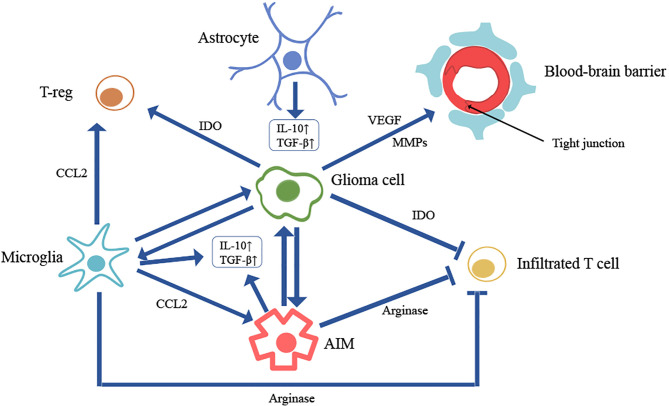Figure 1.
Cell interactions in brain tumor microenvironment. Microglia can 1) modulate glioma growth via facilitating proliferation, invasion and stemness of glioma; 2) promote the recruitment of T-reg cells and anti-inflammatory macrophages (AIM) from systemic circulation through the release of chemokine ligand 2 (CCL2); 3) produce high level of immunosuppressive cytokines like transforming growth factor β (TGFβ) and interleukin-10 (IL-10); 4) produce a large amount of arginase to inhibit T cell proliferation and function by depleting tissue arginine levels. AIM can 1) support tumorigenesis; 2) produce high level of immunosuppressive cytokines like TGFβ and IL-10; 3) produce a large amount of arginase to inhibit T cell proliferation and function by depleting tissue arginine levels. Glioma cell can 1) secrete soluble factors (VEGF, MMPs) to destroy the endothelial tight junctions, causing blood-brain barrier leakage; 2) generate a great amount of indolamine 2,3-dioxygenase (IDO) to both inhibit T cell activity and promote the recruitment of regulatory T cells (Treg) through depletion of tryptophan from the microenvironment; 3) attract both microglia and AIM to enhance tumor growth and promote immunosuppression. Astrocyte can also produce high level of immunosuppressive cytokines like TGFβ and IL-10.

